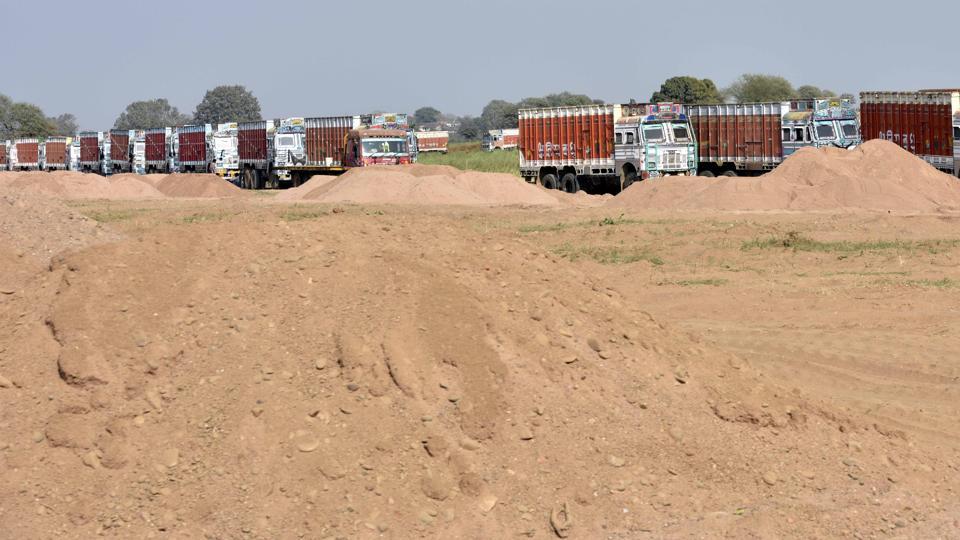Source: hindustantimes.com
The state government is drafting the Bihar State Sand Mining Policy 2019, a move required to incorporate the new rules of the National Green Tribunal (NGT) and the Union ministry of environment, forest and climate change. The new policy will also be tailored after taking into account the problems faced by the state government while handling leased out sand ghats in the past five years.
The last time a Bihar sand mining policy was made was in 2013. After Jharkhand was carved out of Bihar in 2000, the latter has been left with only a few commercially valuable minerals. Besides stone quarrying, royalty from sand mining gives the state government a handsome income. The state mines and geology department has set a target of earning Rs 900 crore in 2019.
Sand mining has been a controversial issue in Bihar. Illegal sand mining has led to major crimes and gang wars in the state.
On June 2, chief minister Nitish Kumar reshuffled the portfolio of various ministers, including mines and geology minister Vinod Kumar Singh, who was replaced by Brajkishore Bind. Sources said that the CM was taking an interest in vetting the new sand mining policy and suggesting changes in it.
Principal secretary, mines and geology department, Harjot Kaur Bamhrah, said that the last policy was of a five-year term, and so there was a need to draft a new policy. “The policy is in the draft stage and a presentation will be made to the higher authorities for vetting,” she said.
Sand ‘districts’ to be redrawn
Sources said that in the new sand mining policy, the mines and geology department, in order to drive up earnings, proposes to increase the number of sand mining units in Bihar. At present, out of 38 districts, the department has divided the state into 25 districts, according to mining units of sand.
“Districts such as Patna, Bhopur, and Saran are clubbed as one unit. Aurangabad and Rohtas are another unit. And Lakhisarai and Jamui are yet another unit. This has been done for mining purpose,” said a source.
However, under the new draft policy, there is a proposal to cut the sand mining ‘districts’ number to 15, but increase the sand mining sites within each unit. “Suppose a district has seven rivers, mining permission at each river will be given to different parties,” they added.
This would give an opportunity to small players to enter the river sand mining business and break the monopoly of big players, said the sources.
Normally, when a lessee gets sand mining licence for a district comprising many rivers, the mining company does not turn its attention to the small river(s) in the district, and gets busy with mining at the big river where the sand yield is more. “The smaller rivers are neglected in the districts, reducing the earnings of the department,” said sources, adding that allotment of more sites and to multiple mining companies would increase the earnings of the department.
Greener mining rules
The new sand mining policy would also incorporate the changes in environment laws, as proposed by the Centre. “The new policy will include the new guidelines of NGT and the union ministry of environment, forest and climate change. The guidelines of NGT are very exhaustive; work is on to incorporate them in the new draft policy,” said a source.
Principal secretary Bamhrah said that the presentation of the new policy would be made to the new mines and geology minister and later approved by the state cabinet. “Hopefully, the new sand mining policy will be in place in the next two months,” she said.
